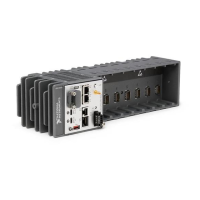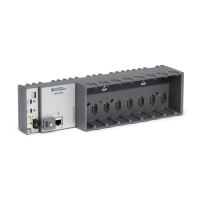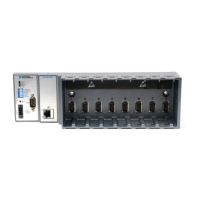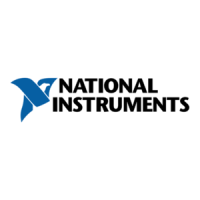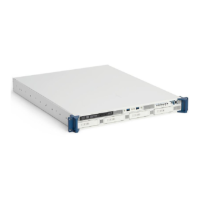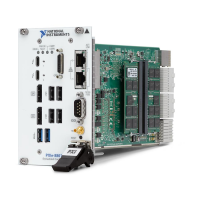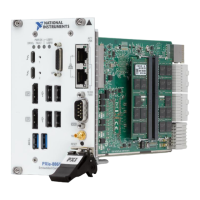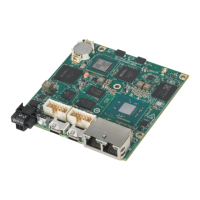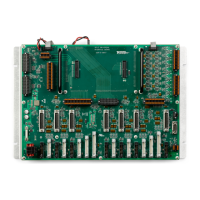© National Instruments | 1-45
NI cDAQ-9132/9133/9134/9135/9136/9137 User Manual
C Series Module
National Instruments C Series modules provide built-in signal conditioning and screw terminal,
spring terminal, BNC, D-SUB, or RJ-50 connectors. A wide variety of I/O types are available,
allowing you to customize the cDAQ controller to meet your application needs.
C Series modules are hot-swappable and automatically detected by the cDAQ controller.
I/O channels are accessible using the NI-DAQmx driver software.
Because the modules contain built-in signal conditioning for extended voltage ranges or
industrial signal types, you can usually make your wiring connections directly from the C Series
modules to your sensors/actuators. C Series modules can sometimes provide isolation from
channel-to-earth ground and channel-to-channel.
For more information about which C Series modules are compatible with the cDAQ controller,
refer to the C Series Support in NI-DAQmx document by going to
ni.com/info and entering
the Info Code rdcdaq.
Parallel versus Serial DIO Modules
Digital module capabilities are determined by the type of digital signals that the module is
capable of measuring or generating.
• Serial digital modules are designed for signals that change slowly and are accessed by
either software-timed or hardware-timed reads and writes.
• Parallel digital modules are for signals that change rapidly and are updated by either
software-timed or hardware-timed reads and writes.
For more information about digital modules, refer to Chapter 4, Digital Input/Output and PFI.
cDAQ Module Interface
The cDAQ module interface manages data transfers between the STC3 and the C Series
I/O modules. The interface also handles autodetection, signal routing, and synchronization.
STC3
The STC3 features independent high-speed data streams; flexible AI, AO, and DIO sample
timing; triggering; PFI signals for multi-device synchronization; flexible counter/timers with
hardware gating; digital waveform acquisition and generation; and static DIO.
• AI, AO, and DIO Sample Timing—The STC3 contains advanced AI, AO, and DIO
timing engines. A wide range of timing and synchronization signals are available through
the PFI lines. Refer to the following sections for more information about the configuration
of these signals:
– The Analog Input Timing Signals section of Chapter 2, Analog Input
– The Analog Output Timing Signals section of Chapter 3, Analog Output
– The Digital Input Timing Signals section of Chapter 4, Digital Input/Output and PFI
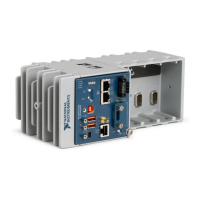
